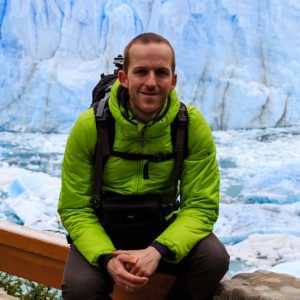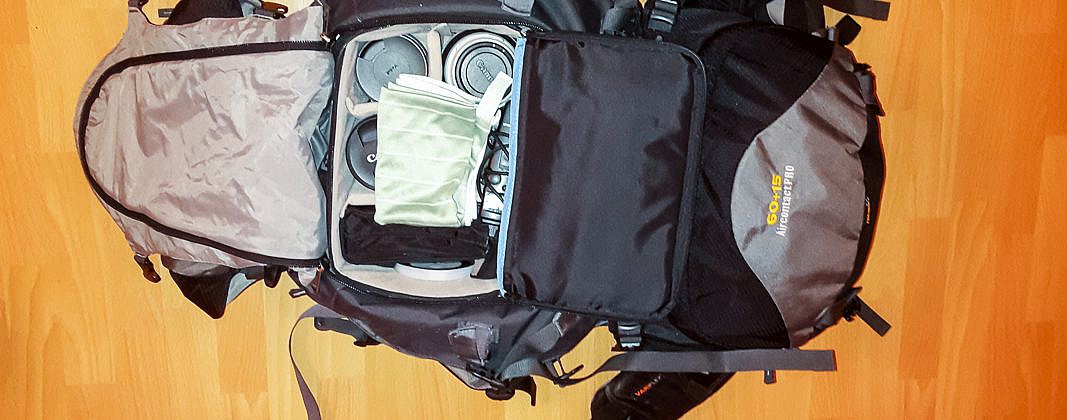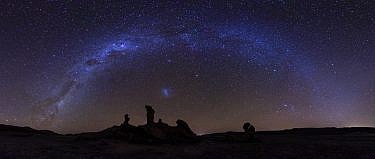The Blog
Some time ago, I wrote two little articles about how I carry my equipment. In Part 1, I presented my favourite holster to you, and in Part 2, my daypack, which I use for my “normal” photographic activities and hikes. The last missing part is about my large trekking backpack, which comes into play when we plan multi-day hikes in the alps with accommodation in alpine huts or even treks with tent and camping gear. Of course, the easiest (and lightest!) way would be to take only a small camera without any further equipment with you, because the the remaining baggage already weighs enough, especially when you have to deal with major altitude differences. On the other hand, during such tours you will find places and views that you cannot find down in the valley, like idyllic mountain lakes, glaciers, etc. And it would really be a shame to see a great alpenglow without being able capture it in the usual quality…
Hence, I cannot resist to take my DSLR with me, together with four lenses, filters, and my tripod, that means photographic gear that sums up to about 10kg. Depending on the tour, that quickly increases the total weight of my baggage up to 23kg for tours in the alps. In Patagonia, where we also needed to carry a tent, sleeping bag, thermal clothes, and food for six days, it even reached 33kg… This weight makes not only great demands to your own fitness, but also to the size and the wearing comfort of your backpack.
As I already said in my article on daypacks, there exist some companies that are specialized and camera backpacks, like f-stop and MindShift Gear, but compared to classical backpacks, their prices are quite high and some also state that the wearing comfort of their backpacks is not comparable with classical backpack manufacturers. After testing some normal backpacks, I again went for my preferred brand Deuter, which is a German manufacturer that offers a wide range of backpacks for different needs of alpine sports and – of course – also large trekking backpacks. I decided that the model Deuter Aircontact Pro 60 + 15 suits my needs best, even if I do not always need such a large backpack. But during our trip to Patagonia, I was able to pack nearly everything inside this backpack, which is much better than carry some heavy items outside.
Let’s now turn to the storage of my photography stuff. To ensure a fast access to my camera during hiking, without having to set down the backpack every time, I again use my aforementioned thinkTANK Digital Holster 20 V2.0* in conjunction with Think Tank Backpack Connection Kit*, which consists of different straps that allow to mount the holster directly on the shoulder straps and hip belt of the backpack. This is really great, because the camera is safely stored in front of my chest, allowing my to use both hands and without annoying me during hiking. As you can imagine, this is especially important when hiking the alps! I mostly have attached my Canon EF 24-70mm f/2.8L II USM* to my Canon EOS 5D Mark III*, which is good combination for documentary shots during the day.
The remaining stuff (mostly Canon EF 16-35mm f/2.8L II USM*, Canon EF 70-300mm f/4.0-5.6L IS USM*, Sigma 24mm f/1.4 DG HSM* (for starscapes), and a selection of filters and other accessories) has to be stored within the backpack. During my first tour with the backpack, I used single lens cases to protect the lenses, which is very flexible, but has the disadvantage that everything is a little bit unorganized… So I bought a separate inlet, the f-stop Small Pro ICU, which has the perfect size to take the aforementioned lenses and equipment and fits exactly into the large compartment of the backpack. You have to know, it is important how you pack your backpack (see the advices from Deuter for further information), so I place the ICU on top of my remaining baggage so that it is about/above shoulder height. Depending on the fill level of the backpack, I am able to reach the ICU via the front access or via the top access, which is fast enough in most occasions. Until now, I tested this solution during our multi-day hikes in Patagonia with camping gear and during a six-day trip in the Swiss alps and it worked out quite well. Furthermore, it is very easy to take out and to carry it with you with a separate shoulder belt when you want to leave your backpack behind and go for little trip without you baggage…
Do you also carry your equipment during multi-day trips? I would be very interested in your solutions and experiences… :-)
* This is an Amazon Affiliate Link. If you use this link to buy something, I’ll get a small commission from Amazon without any additional costs for you.
Tags: Backpack, Deuter, Trekking

More Story
Die letzten Kilometer…
… können manchmal die schwersten sein, aber dazu gleich mehr. Wie bereits im letzten Beitrag geschrieben, wollten wir für...About the author
Dr. Gerhard Aust
Hobby Photographer
contact@gerhard-aust.de
Fischhausstraße 6
01099 Dresden
GermanyThats’s me

Copyright Information
All contens and pictures are subjected to the copyright of Gerhard Aust.
You must not copy or use any pictures without written permission of the copyright owner.
If you are interested in licensing, please make an inquiry via email.











